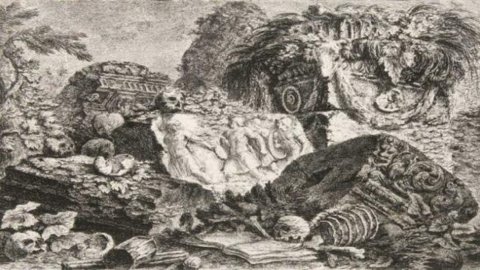This need arises from the fact that the general public is denied the pleasure of assisting in the making of an exhibition itself, in that process of obsessive carving carried out by the artists in dialogue with their curators, committed to pursuing the "best of possible forms" even if Sometimes, we end up adopting specious solutions, in which the fruition of the works is flawed or appears subject to compromise.
Instead of refining the set-up in good time for the inauguration, vice versa we will try to redefine it from time to time, throughout the duration of the exhibition. Not wanting to ensnare the works in a predefined en pose, ever-different installations will continue to be developed, pursuing a completely new mindset compared to previous attempts. The spectator who will visit the exhibition over the months will notice how it is possible to build, reassemble and integrate the exhibition, which will become a work itself, but above all will reveal its internal mechanisms.
No less important is the title/concept of the exhibition. Faithful to the reduction of categories, the project makes it possible to juxtapose autographed works and anonymous objects together with functional furnishings and tools for the setting up. This connivance is not only linked to the space they occupy, but also to the time and taste to which they belong; in the French language, gorgiere derives from Gorge, "throat" (where we have learned to associate our aesthetic education), to underline the fact that taste can be renewed but must never be denied. Precisely for this reason the modern and the contemporary will dialogue with each other - and with the context - in total freedom. This reciprocity will also transform the gorget into a "Möbius strip", a transmission hub that reveals the troubled paths of the setting, and all its background. Thus a multiplicity of meanings is offered which renounces a univocal reading. In the months of February and March, ephemeral installations will take place, susceptible to substantial modifications or even just small expedients, allowing the viewer to witness a broad overview/proposal of curatorial practices and problems.
Just as it is not possible to dive into the same river twice, the evolving nature of this project will never allow the public to see the same exhibition. The invitation is to rediscover the unpredictable ramifications that the project will undergo, keeping in mind a single question: how many exhibitions can be held drawing on the same repertoire of works and objects?
On display works by V. Beecroft, M. Bian-chi, J. Lee Byars, U. Boccioni, F. Bocchini, R. Borella, A. Bucci, GE Chauffourier, CtrlZak, H. De Marco, W. Delvoye, F Di Piazza, L. Dudreville, A. Fairhurst, A. Filomeno, A. Funi, HJ Glattfelder, F. Grignani, C. Höfer, K. Hokusai, M. Jodice, M. La Rosa, Liudmila+ Nelson, N. Poli Maramotti, CM Mariani, S. Menin, L. Ontani, F. Petiti, GB Piranesi, G. Pontrelli, C. Pope, F. Rops, N. Samorì, L. Scarpella, M. Sironi , S. Stein, P. Ventura, J. Villeglé, P. Vogel, Weiluc, A. Wildt, D. Wolf, Poka Yo.





